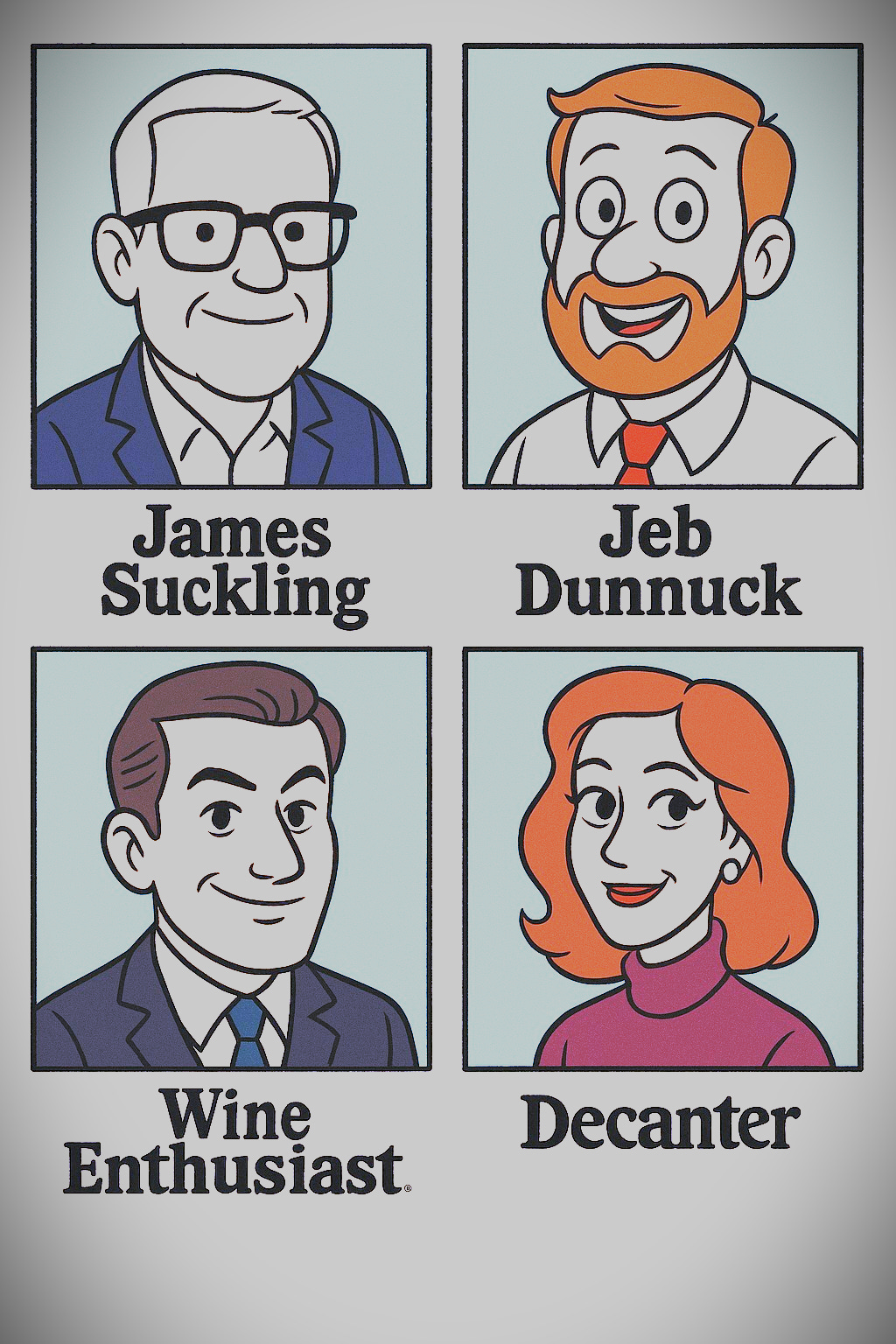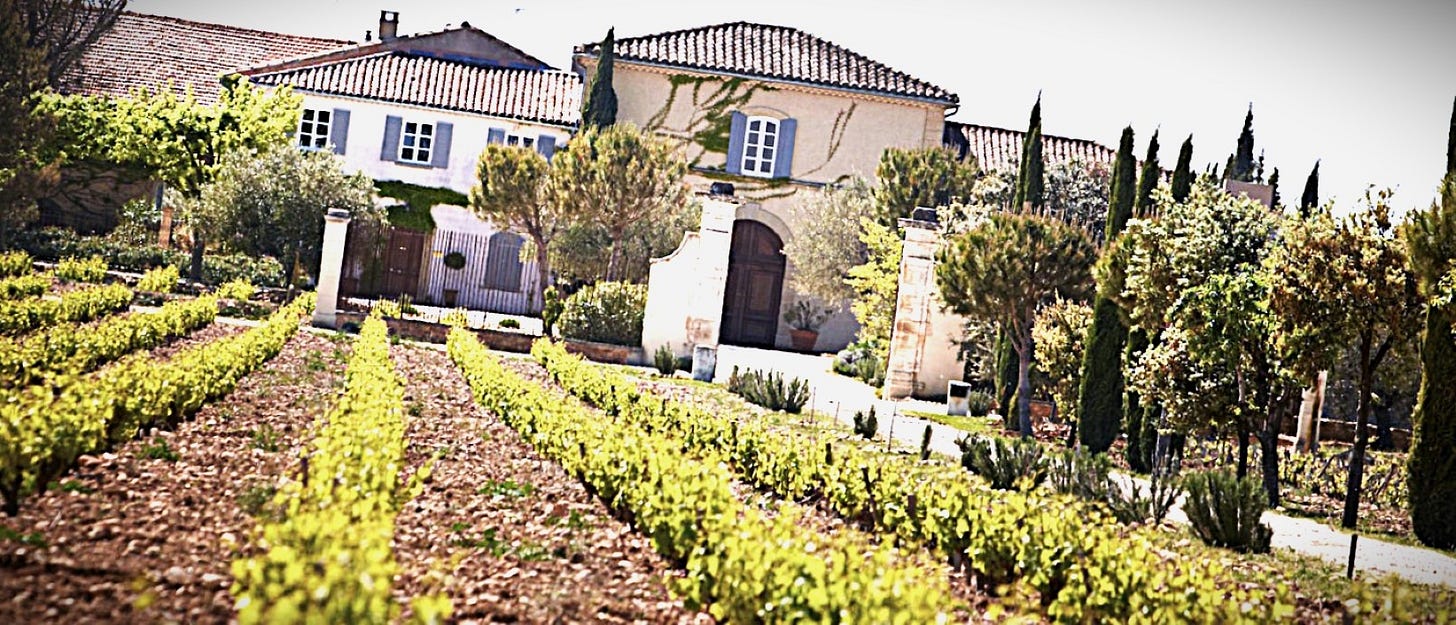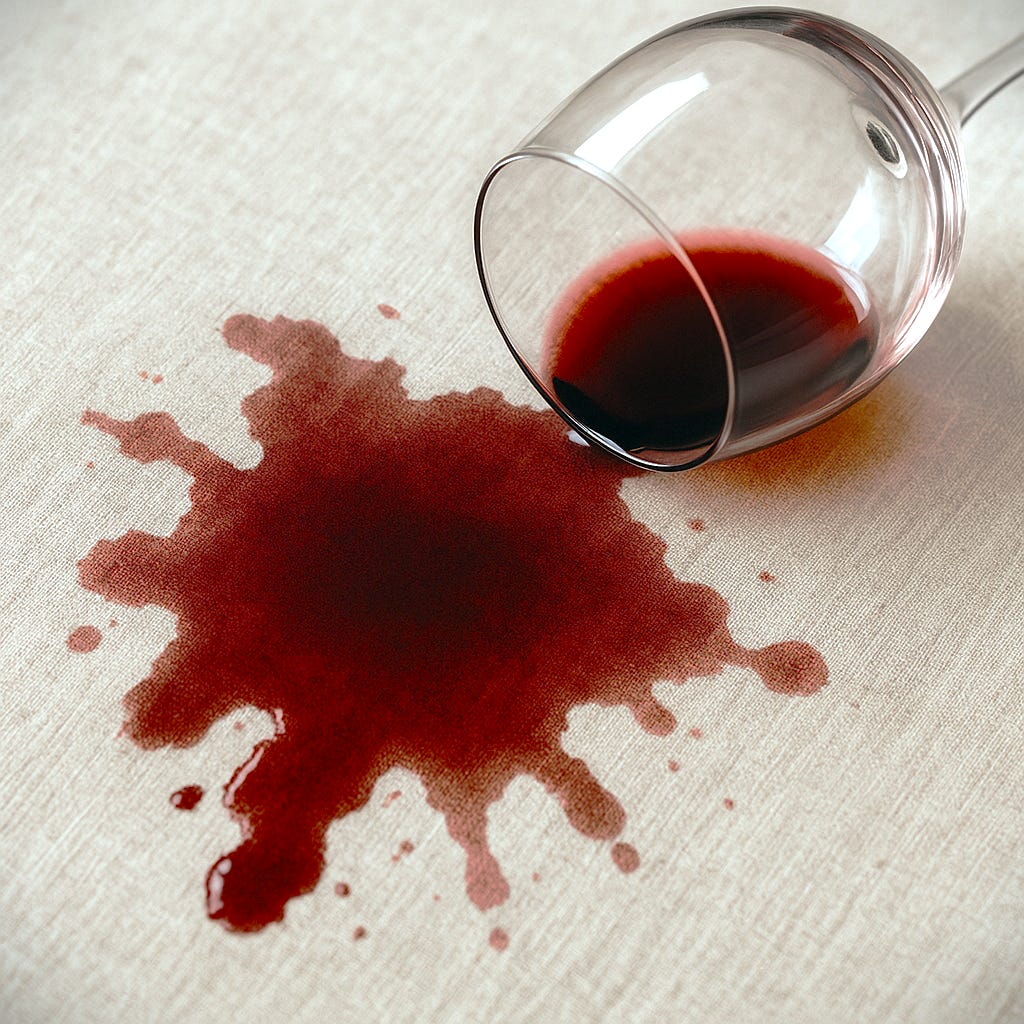Indelible Wine Stain Wine Review-Review
A review reviewing the wine reviews from Château Beaucastel 2022
“One should not always refuse to abstain from declining to express what p’haps oughtn’t to have been said in the first place. However, in realms of the wine critic, such and so restraint is nearly almost never observed. And throughoutly so, for wine is not the liquid, but the metaphor fermenting in its wake, my dear Gregory… go forth to find the Indelible Wine Stain!”
Peter “Peter” Prindle, founder of The Indelible Wine Stain
This quote was from a series of letters betrothed unto me by my grandfather, Peter “Peter” Prindle, the man who founded The Indelible Wine Stain and was possibly the first living human to assign an Indelible Wine Stain score to the feel of a wine taste.
I, for one, find no greater joy than reading the opinions of others on aromas they cannot possibly agree upon, structured through the fragile scaffolding of point systems designed to objectify the ineffable.
Every morning when I rise, I look in the mirror and rate myself.
Today, for example, I am a pronounced wine stain, or as most of the world sees - 94 points.
And so, in the spirit of glorious subjectivity dressed in the formalwear of objectivity, I humbly launch our newest feature:
Wine Review Review
Where we review the reviews of the reviewers that review.
Here we launch the first of a review of a wine review. Yes! let us turn the tables on the wine critics and review their wine reviews.
For this first edition, we are reviewing the 2022 Château de Beaucastel, Châteauneuf-du-Pape. The red one to be exact…the white one is also good.
What is Château de Beaucastel?
Not to be too philosophic but we could ask, what is anything?
In this case, it is a wine. Some may or may not say it is a standard bearer of the Southern Rhône. Others may or may not say that.
“Beaucastel” is what might happen when all thirteen permitted varietals are allowed to live together in a large neutral barrel. Like the television s-hit, “Big Brother,” but with grapes and fermentation instead of betrayal, pseudo-celebrities and hot tubs.
Meet the Critics and Featured Journals
note: image taken from cancelled Hanna-Barbera cartoon “The Wine-O’s”
James Suckling
An “Old Skool” critic - like the Dr. Dre of wine reviewers. He was formerly the Senior Editor and European Bureau Chief at Wine Spectator. James has, since 2010, been at the helm of his own metaphorical Ship. The independent platform, www.jamessuckling.com.
He focuses primarily on Bordeaux, Tuscany, and Rioja, and has become one of the most visible faces in wine criticism today.
Jeb Dunnuck
Once an aerospace engineer, Jeb Dunnuck fell so deeply for the wines of the Rhône Valley that he launched “The Rhône Report” in 2008. His passion and palate soon led him to The Wine Advocate, where he covered Rhône and California wines before going on to establish his own outlet.
Wine Advocate
Founded by the legendary Robert Parker in 1978, The Wine Advocado became the gold-leaf standard of wine scoring, ushering in the 100-point scale that already existed in wine schools and going on to influence world markets with the flick of a pen. Today, it continues under new leadership of the Michelin Guide, who bought it in 2019.
Decanter
A major spinal column of British wine journalism skeleton since 1975, offering a broad and well-respected perspective with a distinct editorial character. Known for engaging Masters (and Mistresses) of Wine, regional experts and international judges - the publication relies on a 20-point system except for the USA, where they have adopted the 100-pointer.
Note: Wine Spectator & Wine Enthusiast weren’t included due to lack of a published review for this vintage at the time of writing but certainly not exempt to the Wine Review-Review.
In fact, no-one is safe!
The Reviews – What They Done Said
James Suckling – 97 Points
“A textured, layered, precise red, showcasing aromas of cherries, raspberries, warm herbs, bay leaves and baking spices. It’s medium to full-bodied with silty, beautifully melted tannins. So integrated. Lively and focused, with plenty of energy and verve complementing the ripe red fruit and dried herbs. Intense stream of spices in the long, flavorful finish. From organically grown grapes. Try after 2027.”
Indelible Wine Stain Wine Review-Review
“We are offered a symphonic swirl of “textured, layered, precise.” We are fans of the 3-word tasting note and this is a good example. Up next though, what is a “warm herb”? Some Sage in a sweater? Or Basil in a Balaclava?
“Silty, beautifully melted tannins,” wait…is this a Châteauneuf or a chocolate lava cake? We can see here that Suckling's signature is emotion over anatomy: wine as lifestyle poetry, not a lab report. There’s “verve” and the obligatory red fruit parade - raspberries & cherries - left unnamed until appearing posthumously in the tasting note. The finish is “intense” and “flavorful,” and while nothing is technically wrong, he could have said more - home James.”
Score for the Review: 85/100.
Jeb Dunnuck – 95 Points
“The 2022 Châteauneuf Du Pape is some serious Provençal goodness, with just about overflowing aromas and flavors of sweet raspberries, blackberries, peppery garrigue and Provençal spices. It has the sunny, expressive, complex style of the vintage, medium to full-bodied richness, ripe tannins and a great finish. It reminds me slightly of the 2009 and will have two decades of longevity.”
Indelible Wine Stain Wine Review-Review
“Jeb’s review is like a love letter from Provence from my giddy aunt. We’re told the wine has “some serious Provençal goodness,” a phrase that sounds like something you’d spread on toast. His note flows with affection and confidence though: raspberries, blackberries, peppery garrigue - it’s a farmer’s market in a glass! Yet phrases like “just about overflowing” and “slightly reminds me of 2009” leave one floating in sensory limbo. Does he mean the vintage, the financial crash or that time the Large Hadron Collider was disabled by an airborne baguette? Either way, the wine’s sense of gravitational dislocation and stony friction certainly tracks. Still, Dunnuck’s emotional generosity is real. But why say two decades instead of 20 years?”
Score for the Review: 88/100.
Wine Advocate – 94 Points
“Matured 100% in foudres... evokes aromas of dark wild berries, dark cherries, spices and licorice mingled with a touch of chocolate. Medium to full-bodied, deep and dense, it’s perfectly balanced with a structured, textured and seamless mid-palate... peppery, delicate and long finish. Blend: 30% Mourvèdre, 20% Grenache, 10% Counoise, 5% Cinsault, 5% Terret Noir, 5% Muscardin, 5% Vaccarèse, and 20% white grapes.”
Wine Review-Review
“Written by a verbal brick layer: methodic, clean and with sharp corners. This review is a dense catalog of varietals and phenolics - Mourvèdre, Grenache, Vaccarèse - all accounted for like tax receipts. He references “100% foudres” without even mentioning what a collection of Foudre is called! Outrageous. Aromas are noted, body is touched and there’s a finish described as both “peppery” and “delicate,” which is like calling someone both arresting and apologetic. There is no fluff, no metaphor, no nonsense, no imagery. It’s all there… and yet somehow not alive.”
Score for the Review: 86/100. And it’s a resonance of Foudres.
Decanter – 96 Points
“Dark and inky in colour this year. It's fresh in its berry fruits, really quite powerful, with muscular tannins and driving acid.”
Wine Review-Review
“Decanter's review is as tight and British as a Savile Row tailor. At under 30 words, it tells you everything - and nothing. It is the Buddha of wine reviews. “Dark and inky” sets the tone, a nod to Mourvèdre’s brooding gaze from the other side of the pub, you know, near the dartboard. It is followed by “fresh in its berry fruits,” which sounds like the berries themselves underwent a skin transplant. “Really quite powerful” is a linguistic contradiction best resolved over sherry. Finally, salvation arrives in “muscular tannins and driving acid.” Two phrases that - though clichéd - actually convey something. The whole tasting note reads like a telegram from the Royal Air Force wine officer.”
Score for the Review: 86/100.
The Indelible Wine Stain Review
2022 Château de Beaucastel Châteauneuf-du-Pape
“The wine opens, not so much with a bouquet as with a soliloquy, as though each grape variety were clearing its throat backstage. What emerges first is Mourvèdre, smelling of rusted sabers soaked in cherry juice, dried in a drawer of old Provençal linens, then folded into the memory of a father you never quite understood.
The fruit is red, yes - this is the red one from Beaucastel - so, raspberry, but not the kind sold in punnets; the kind stolen by foxes, half-fermented on the vine, sun-warmed and still wet. There's blackberry too, but cloaked in camphor and clove, like a Victorian highwayman hiding in a hedgerow.
Garrigue? Yes. But not just “peppery garrigue.” This is the garrigue of the subconscious. Ethereal garrigue - by Jean-Paul Gaultier.
Structurally, the wine is medium-to-full-bodied, in the way a French peasant’s dream of a banquet is both comforting and faintly menacing. The acidity drives, yes - but it drives like a 1930’s Bugatti with faulty brakes: thrilling, elegant and absolutely unwilling to stop before the tannins arrive.
And what tannins they are - not melted, not silty, not muscular. They are wiry and unresolved, like a disagreement between a fencing instructor and a philosopher. They bind the wine not in embrace, but in a complex mutual understanding of long-term custody. Kramer versus Kramer in a glass.
The oak - foudre-aged, no doubt - is not a flavor, but a mood. The finish is long. Not in seconds, but in emotional duration.
The wine includes 20% white grapes; this gives it a lift, a brightness. The Counoise brings levity. The Vaccarèse, as always, brings little but is happy to be included and once did bring a quiche.
This is not a wine you drink, it is a wine that drinks you.”
A Pronounced Wine Stain (Equivalent to 90-94 points)
Difficult to remove and may require professional cleaning
“This wine settles in the mind and leaves a pronounced stain. It is, no doubt, a high-quality wine with excellent attributes that you’ll remember for a time. Its complexity and depth ensure that it stands out, much like a well-told fable with a lesson, that stays with you and is worth sharing with others.
Wine criticism often sits delicately between poetry and performance.
Should you read the reviews?
Yes. But only if you’ve already finished the bottle.







